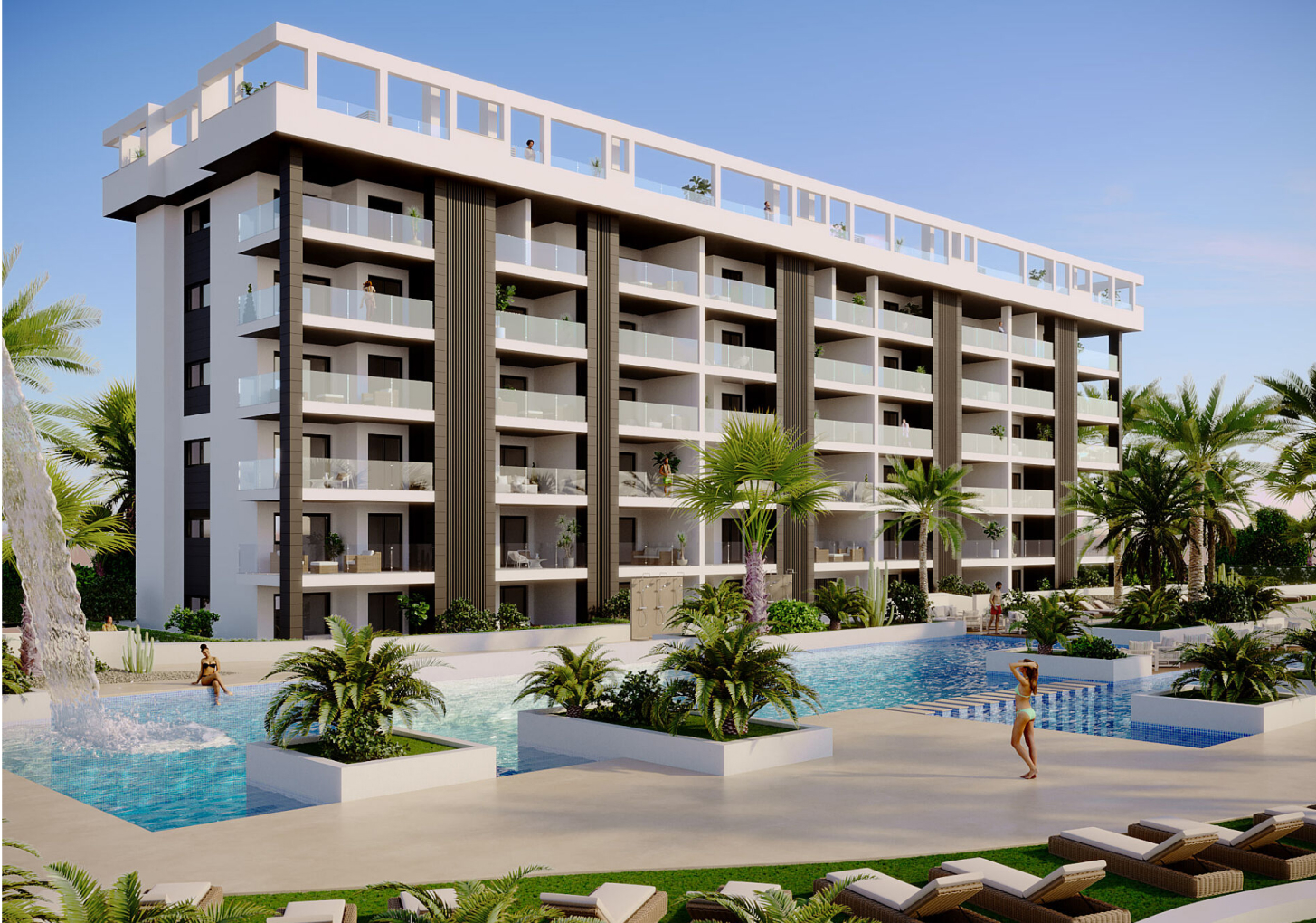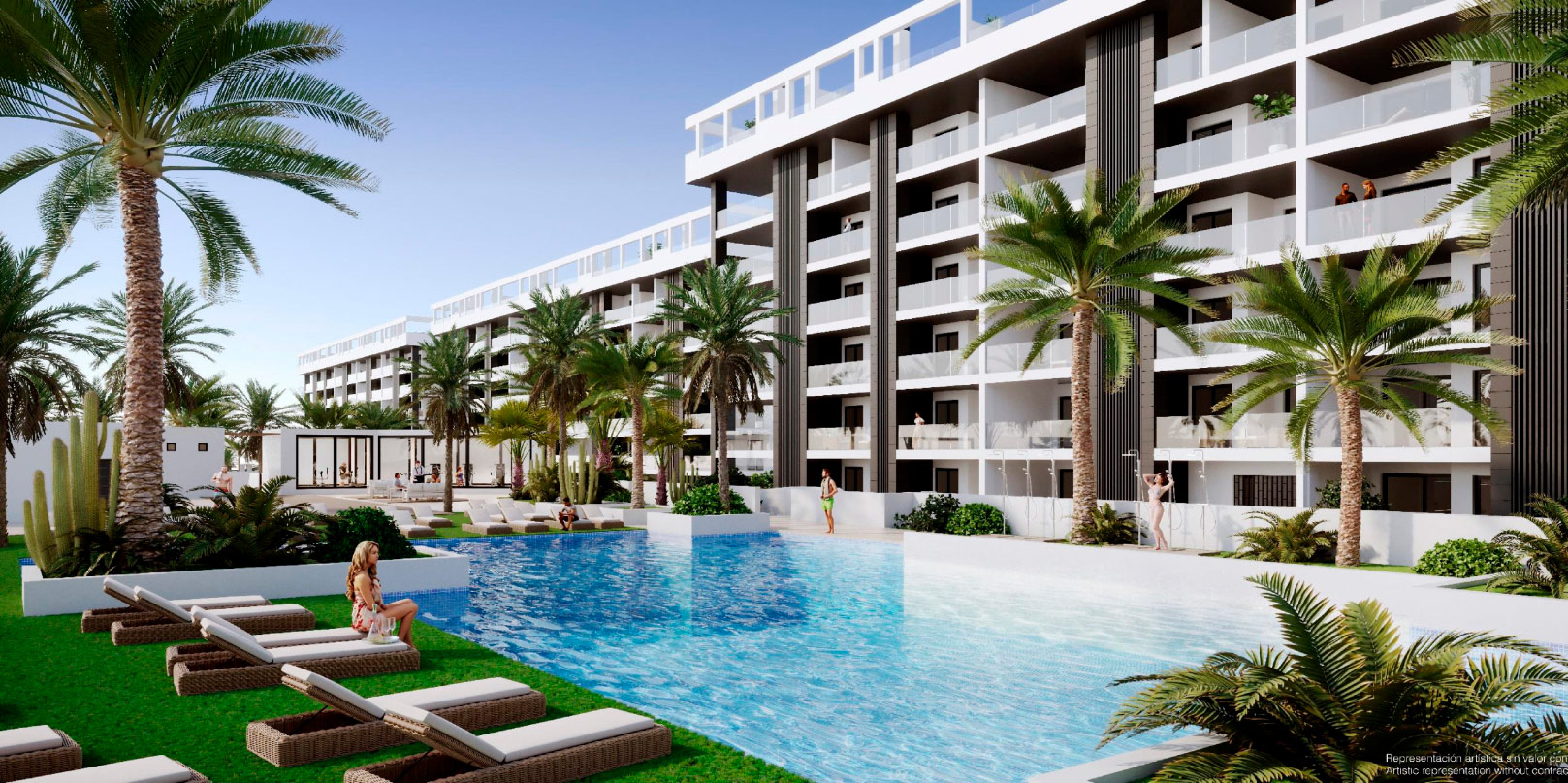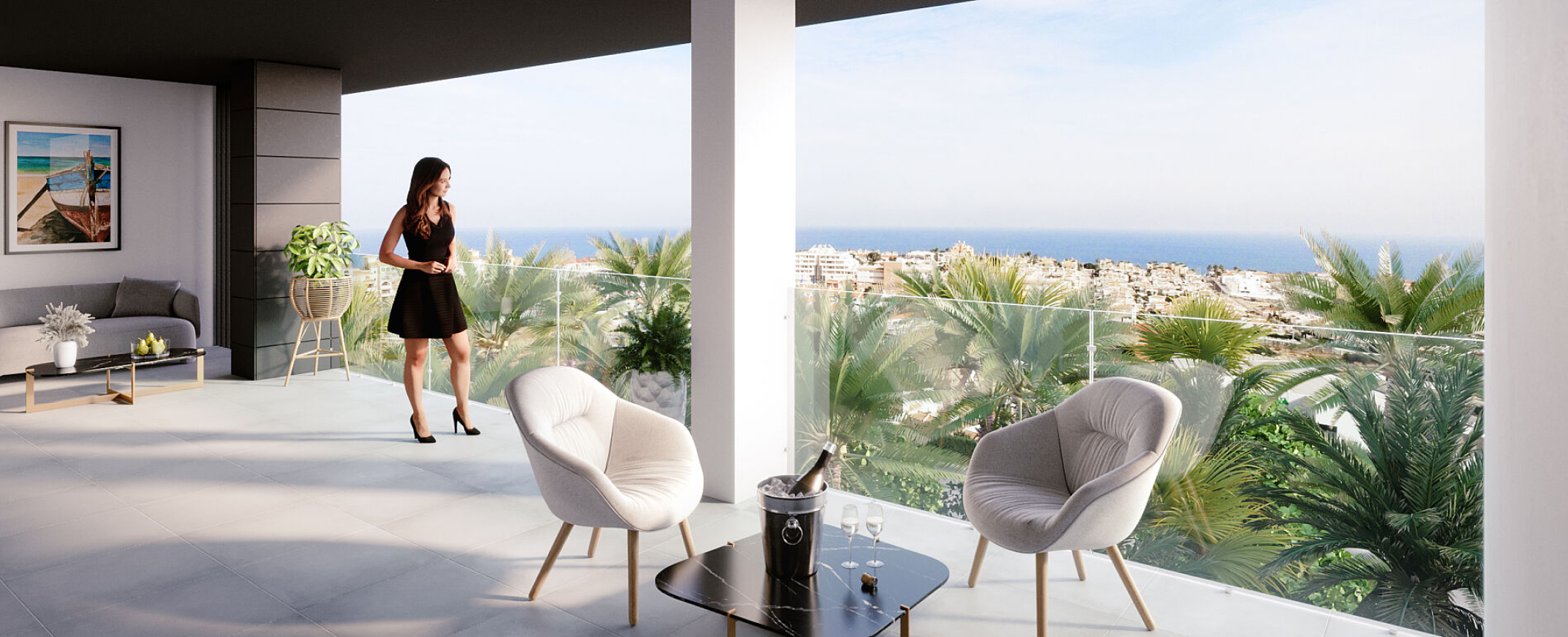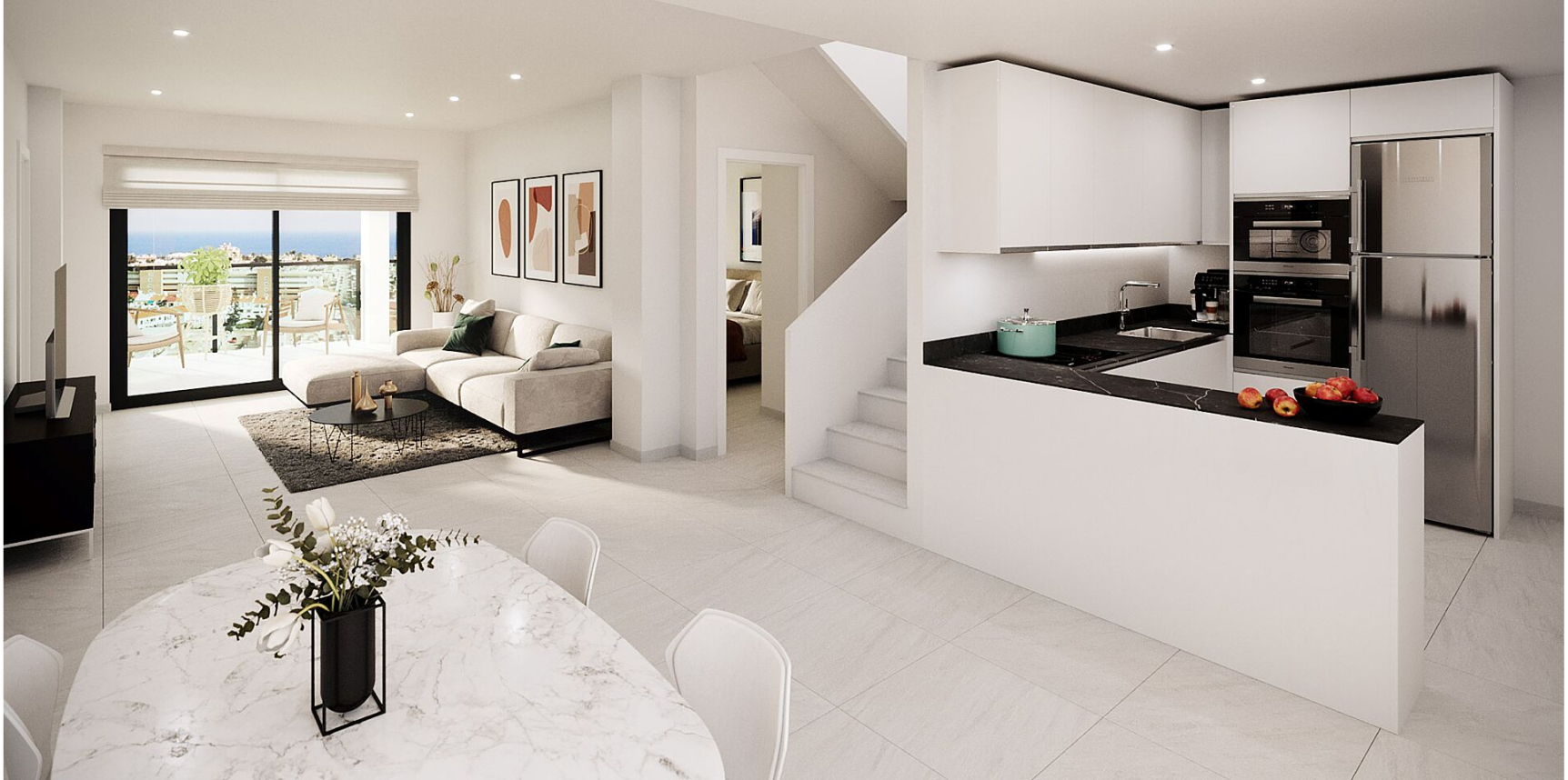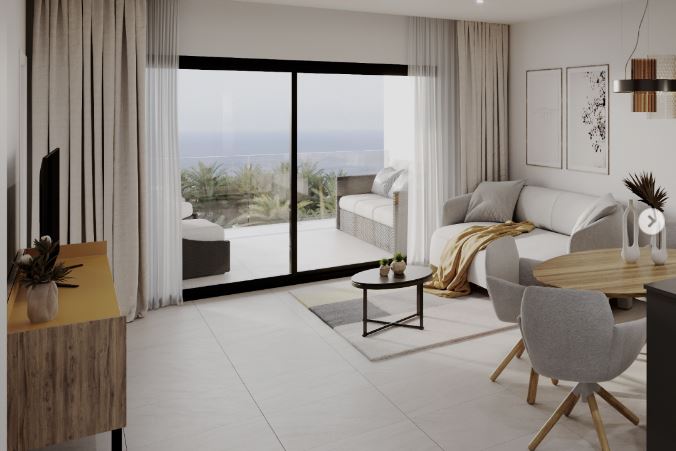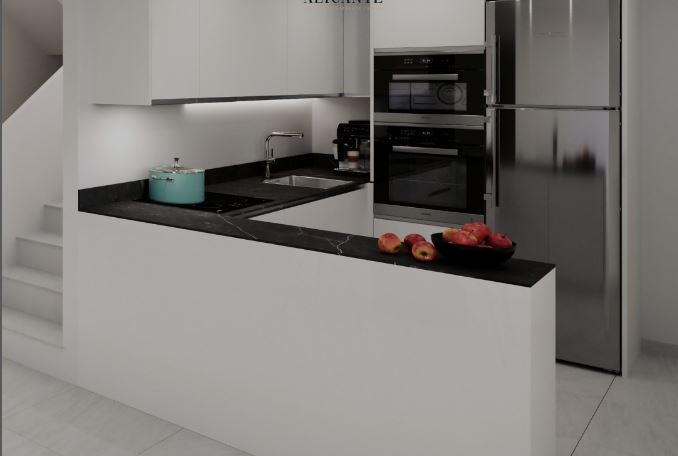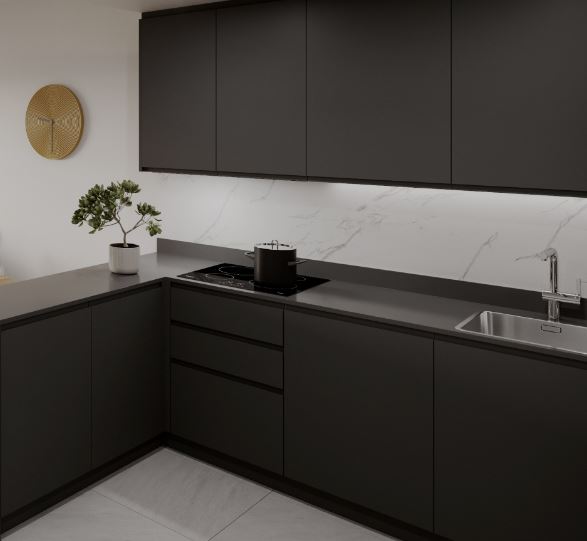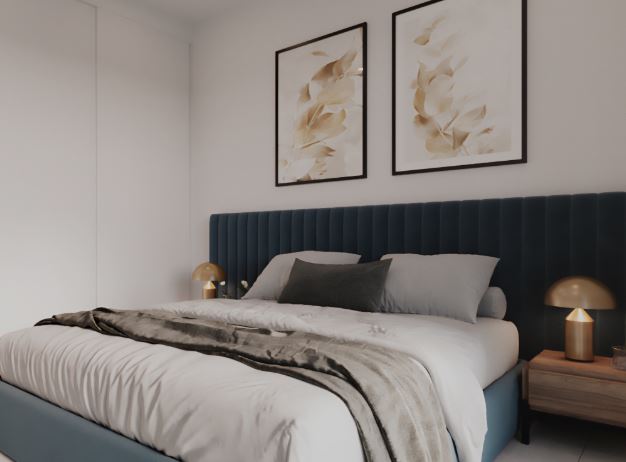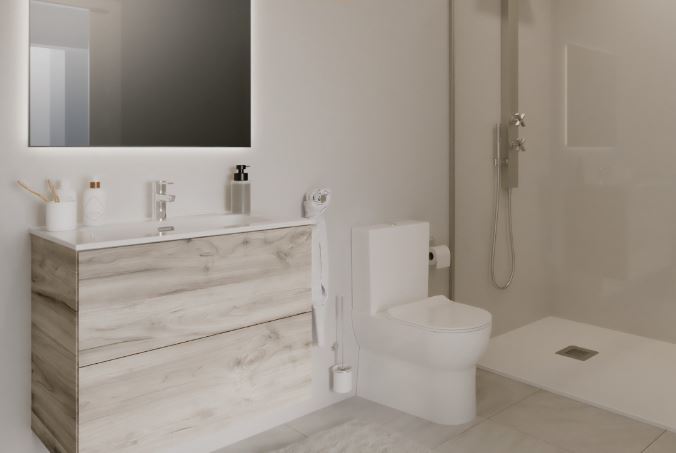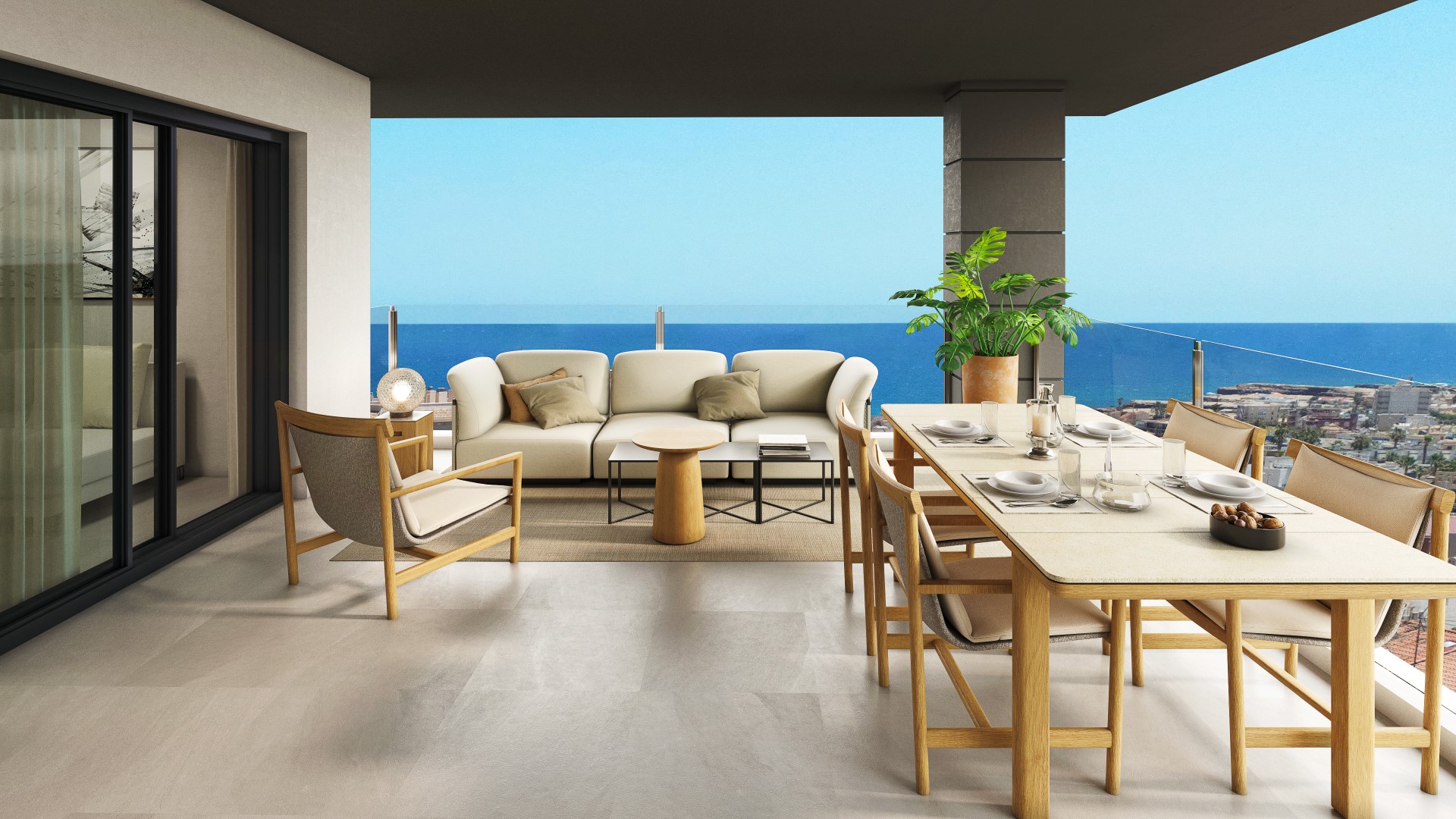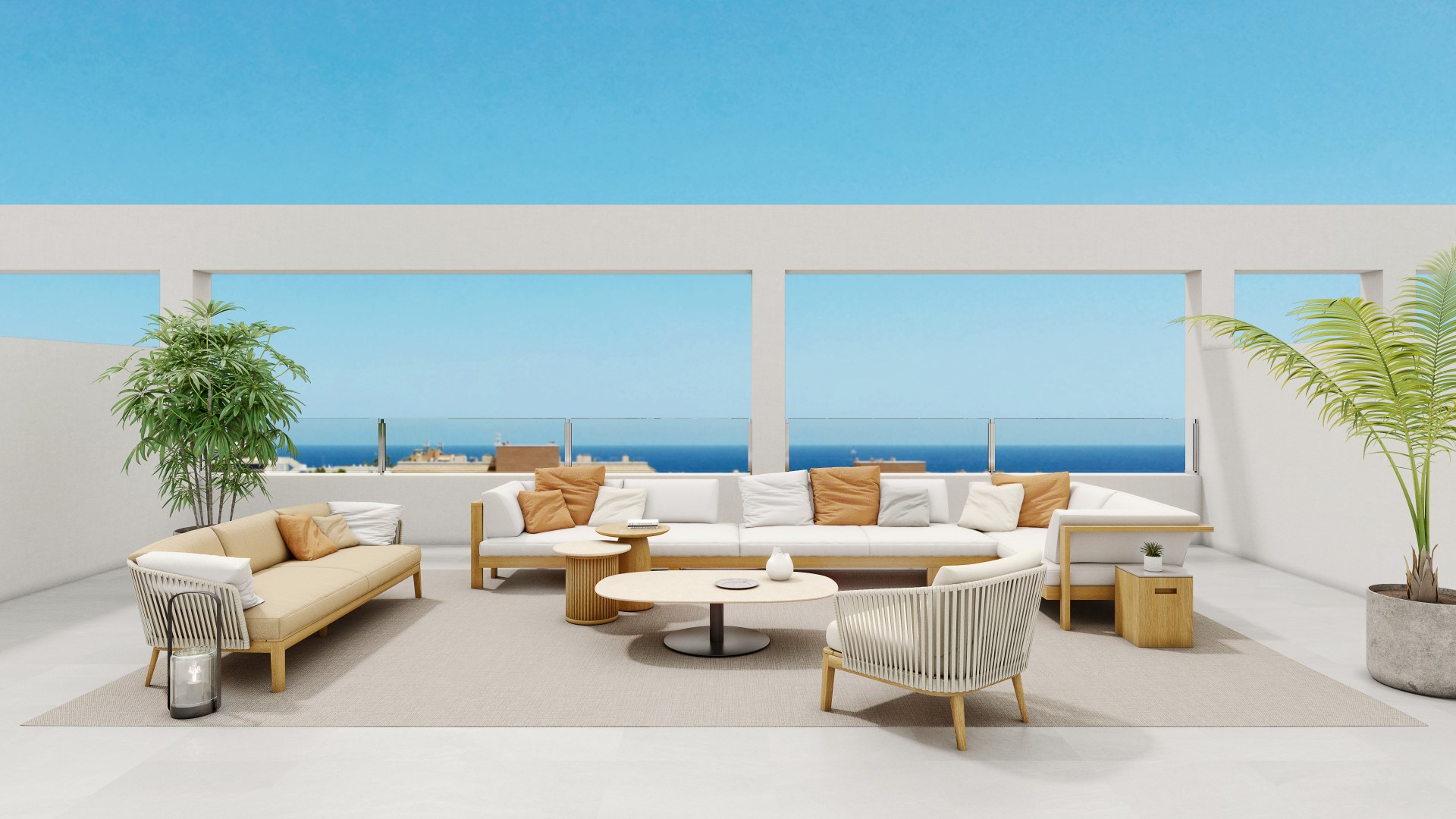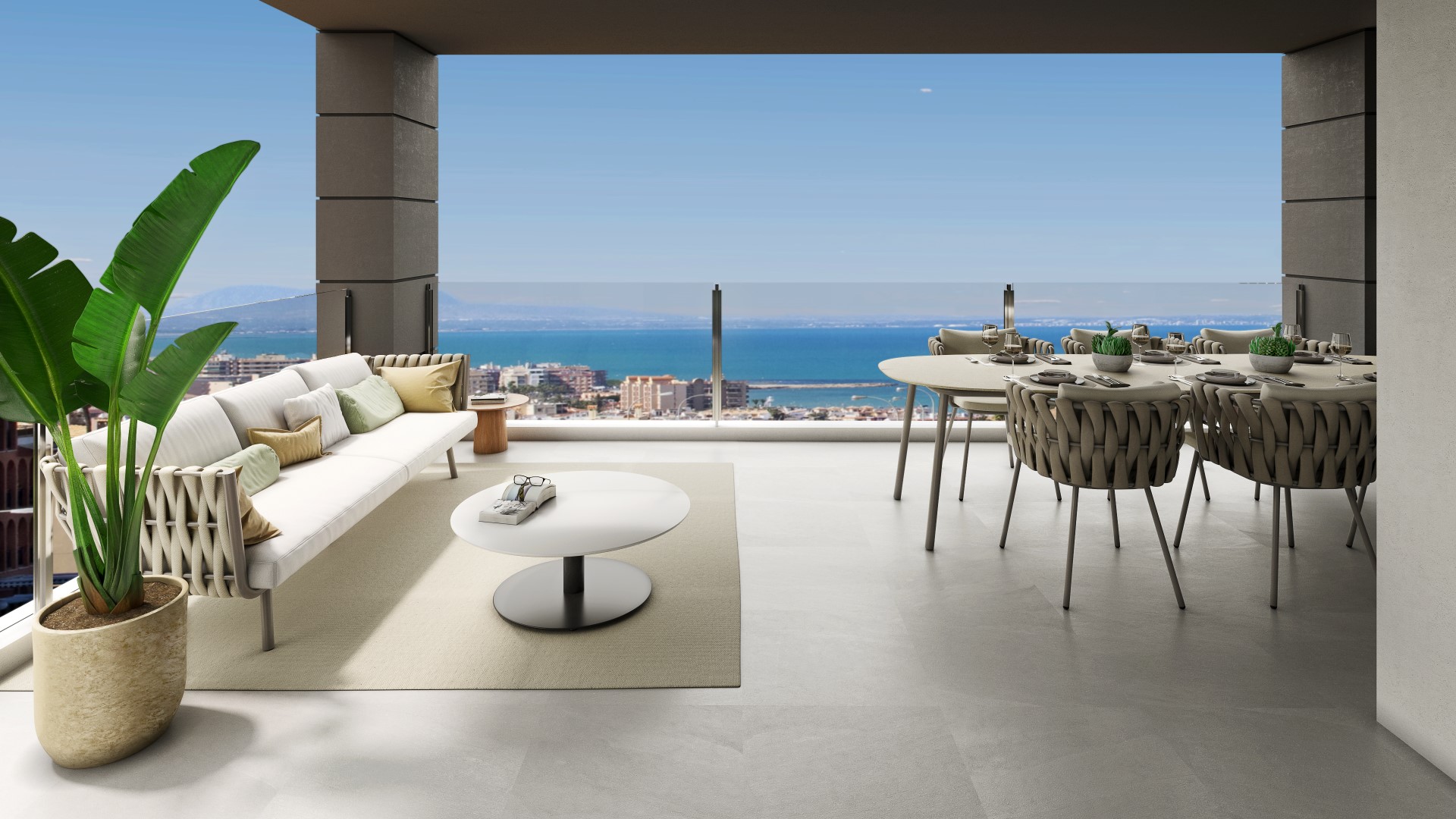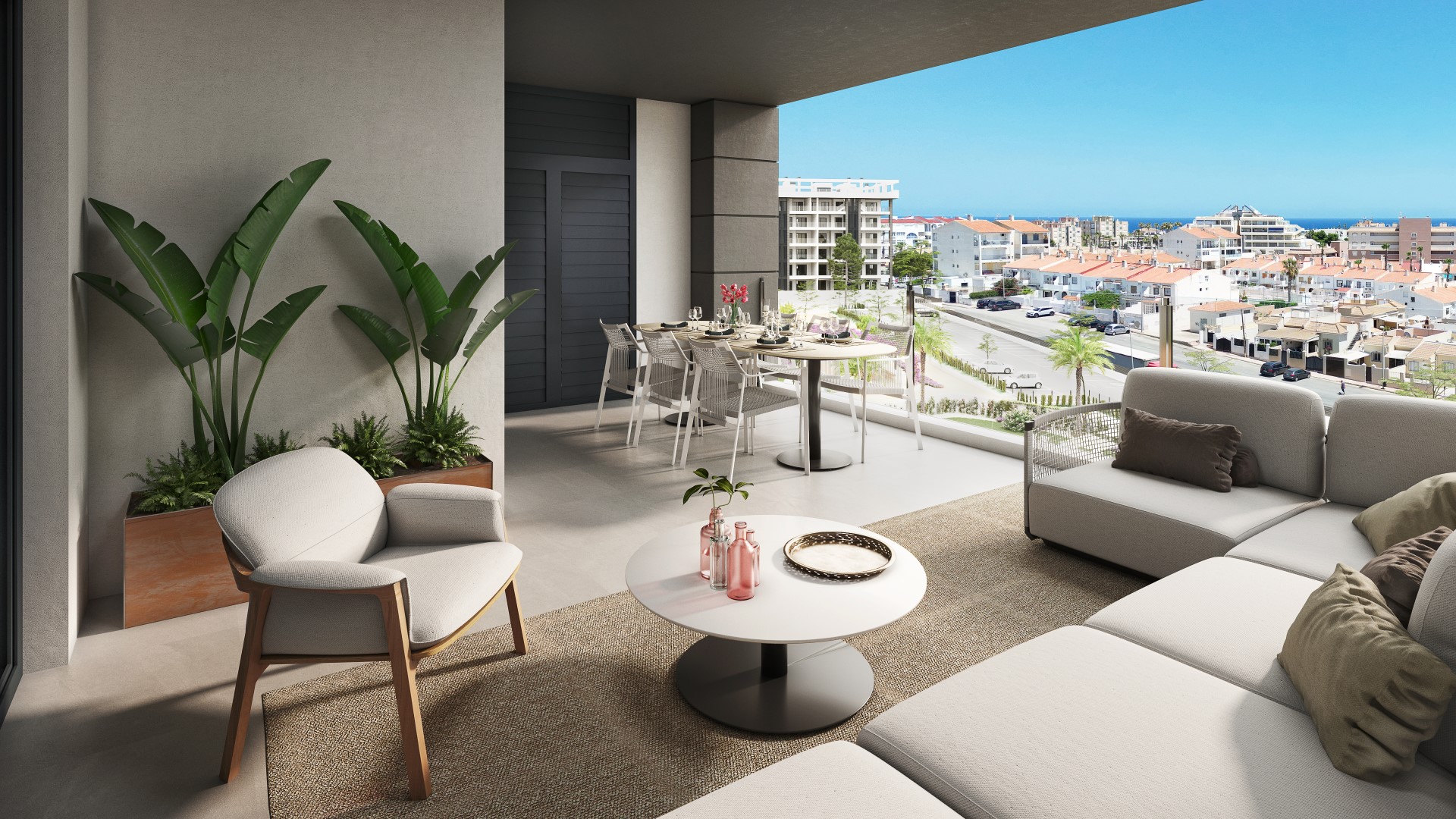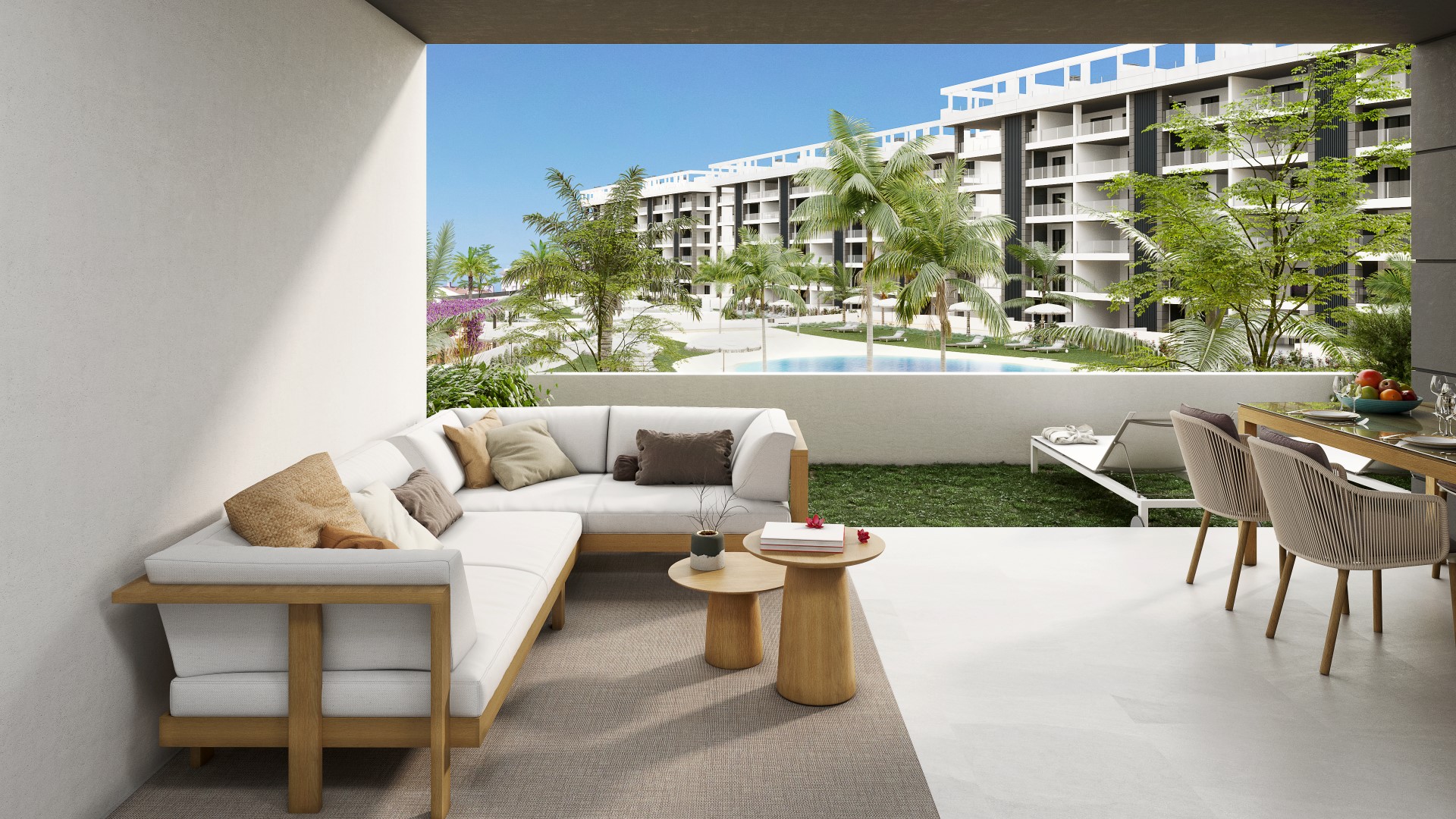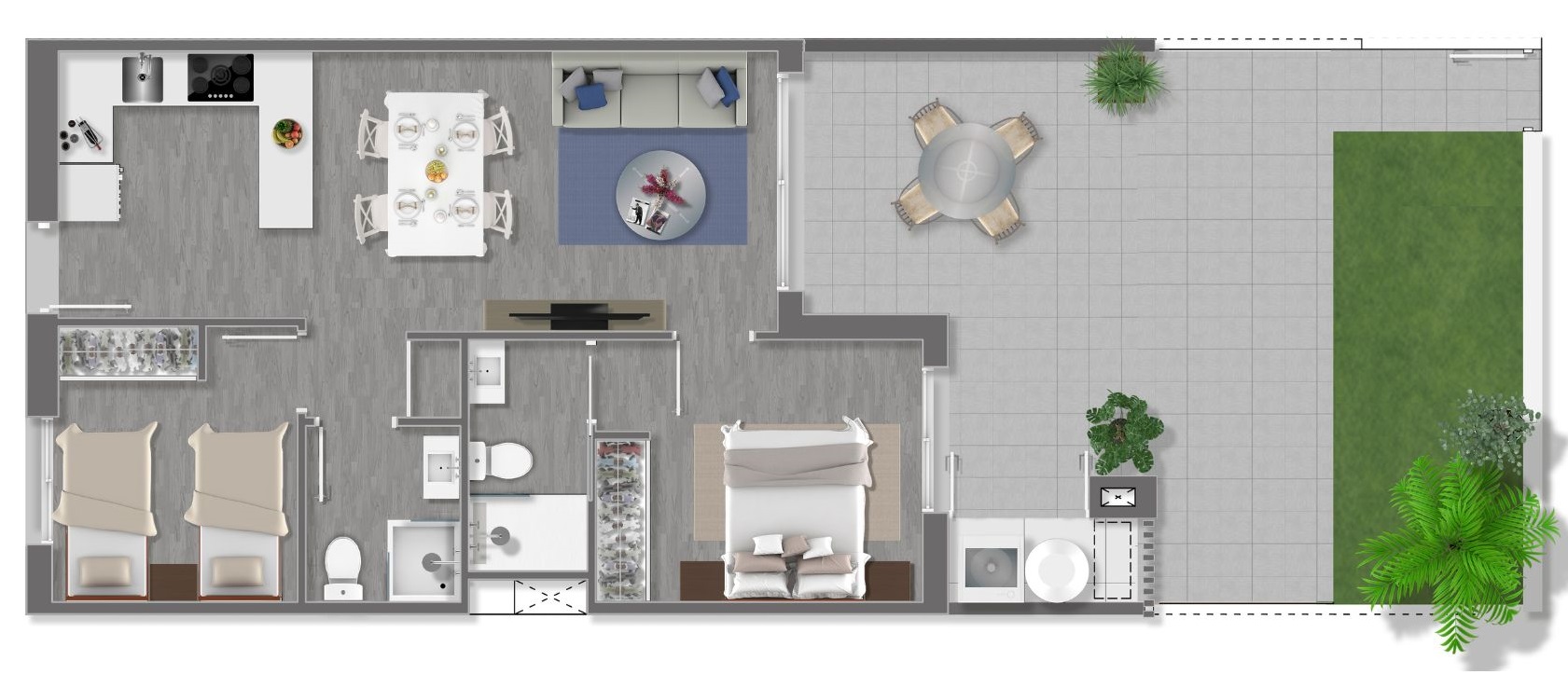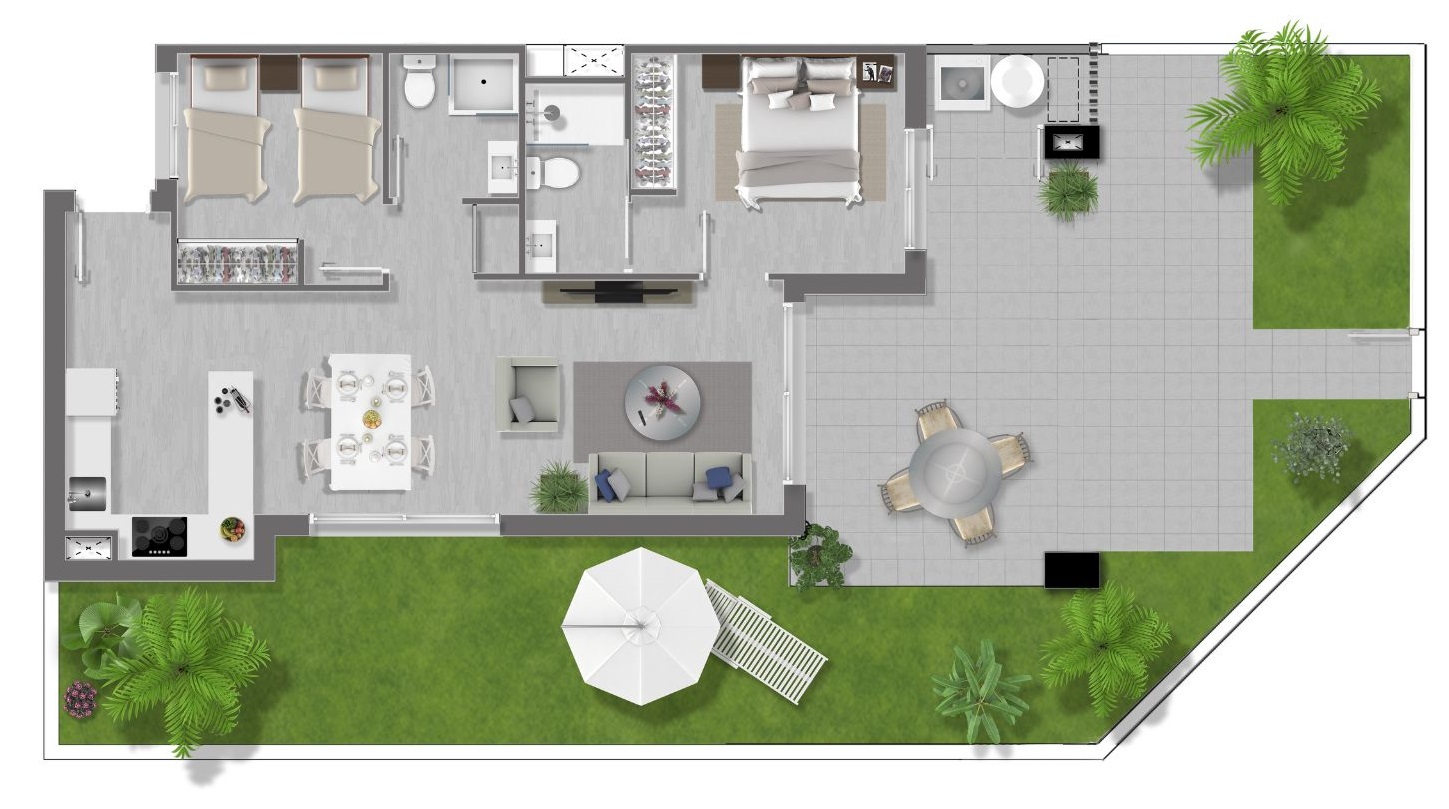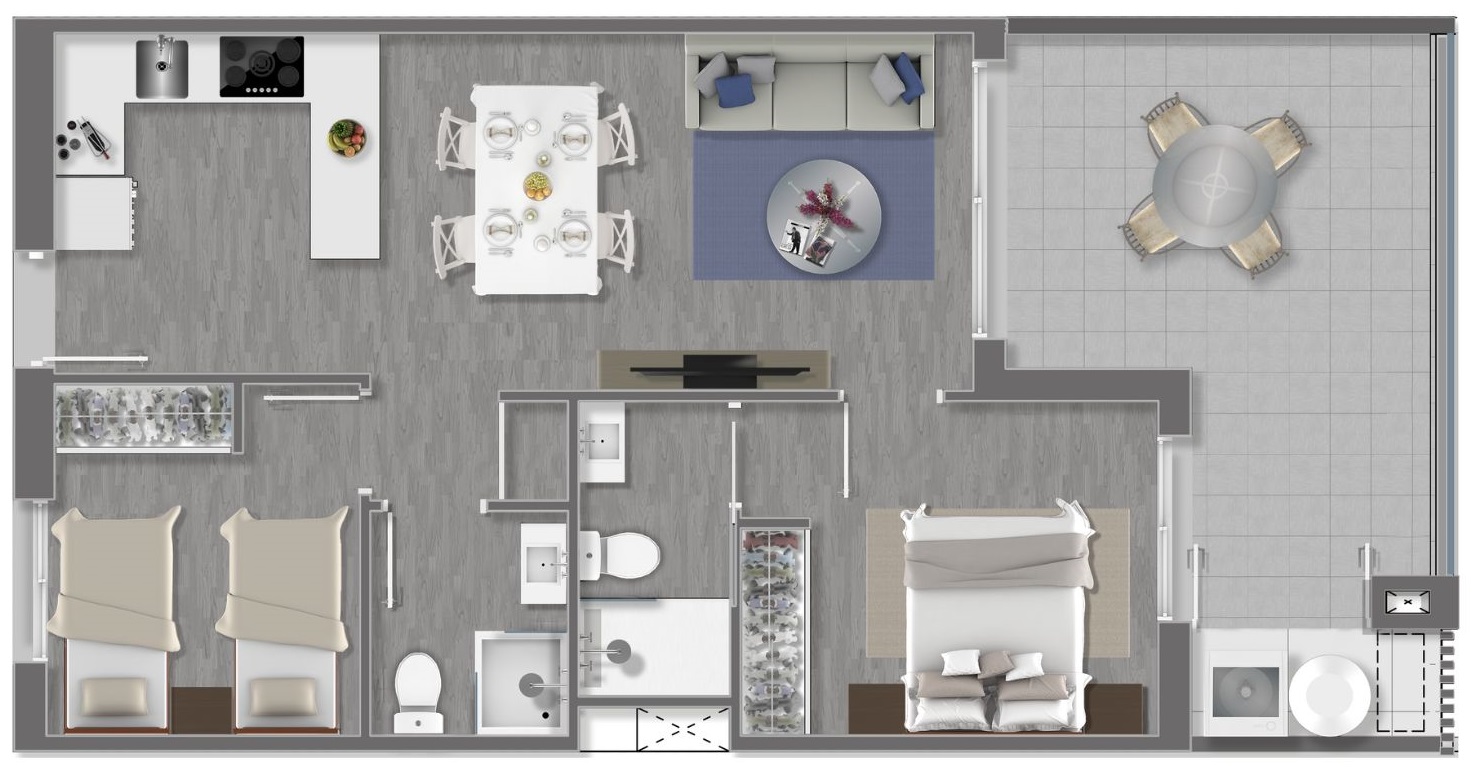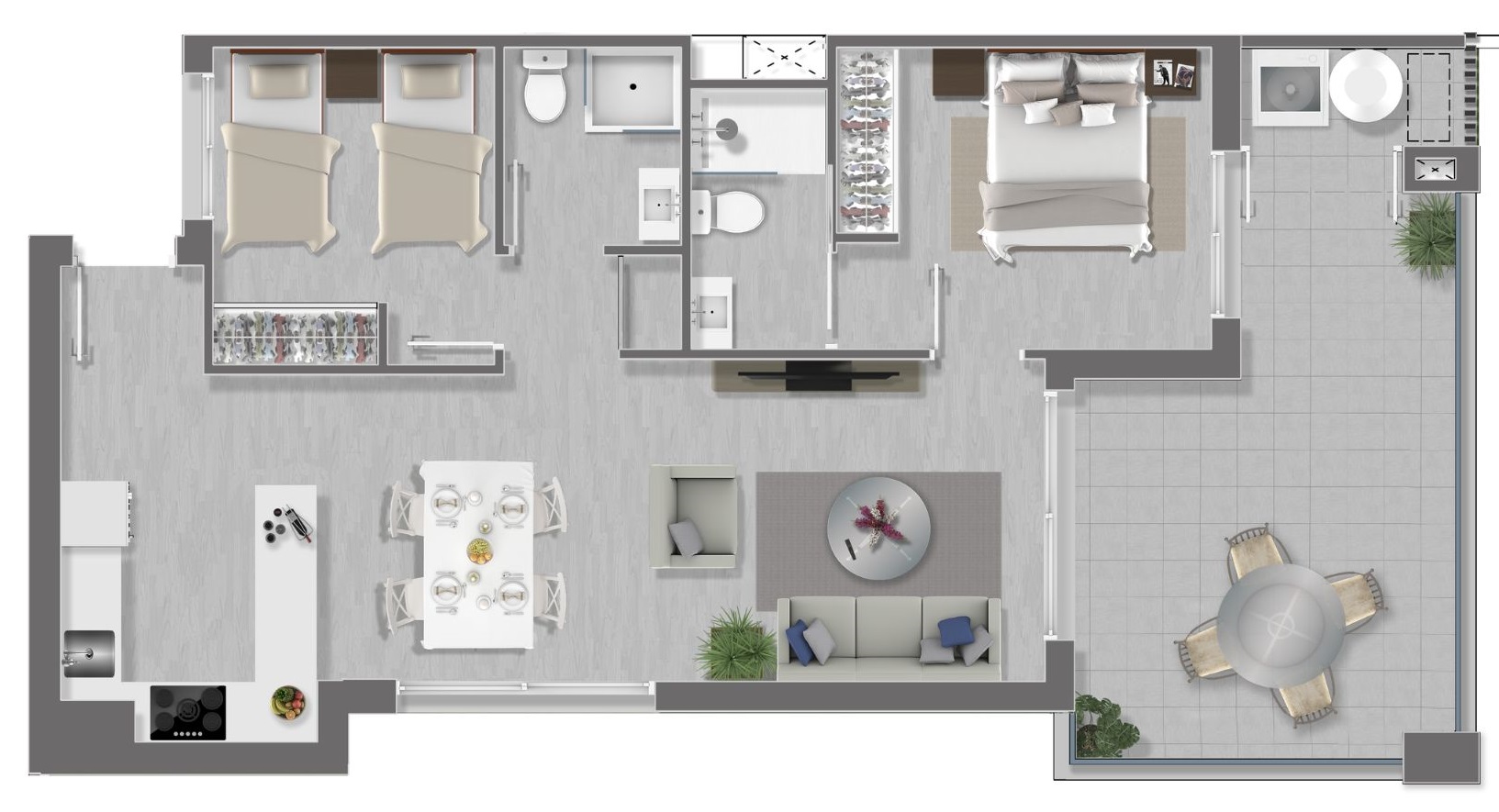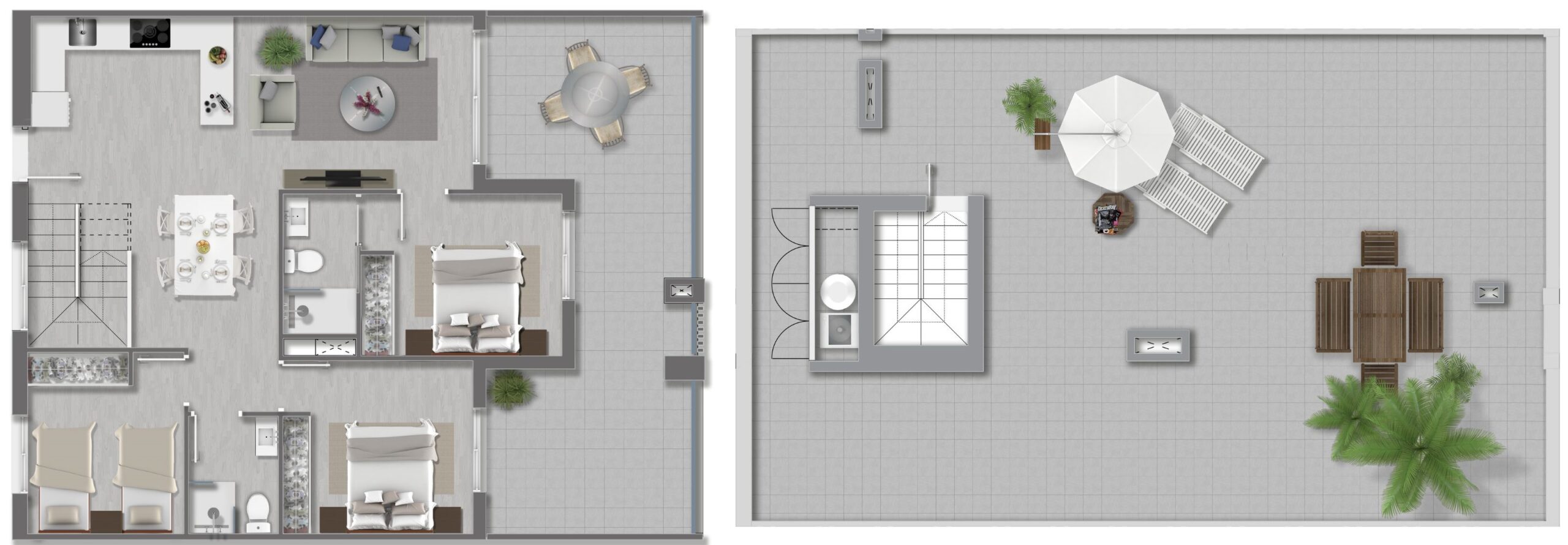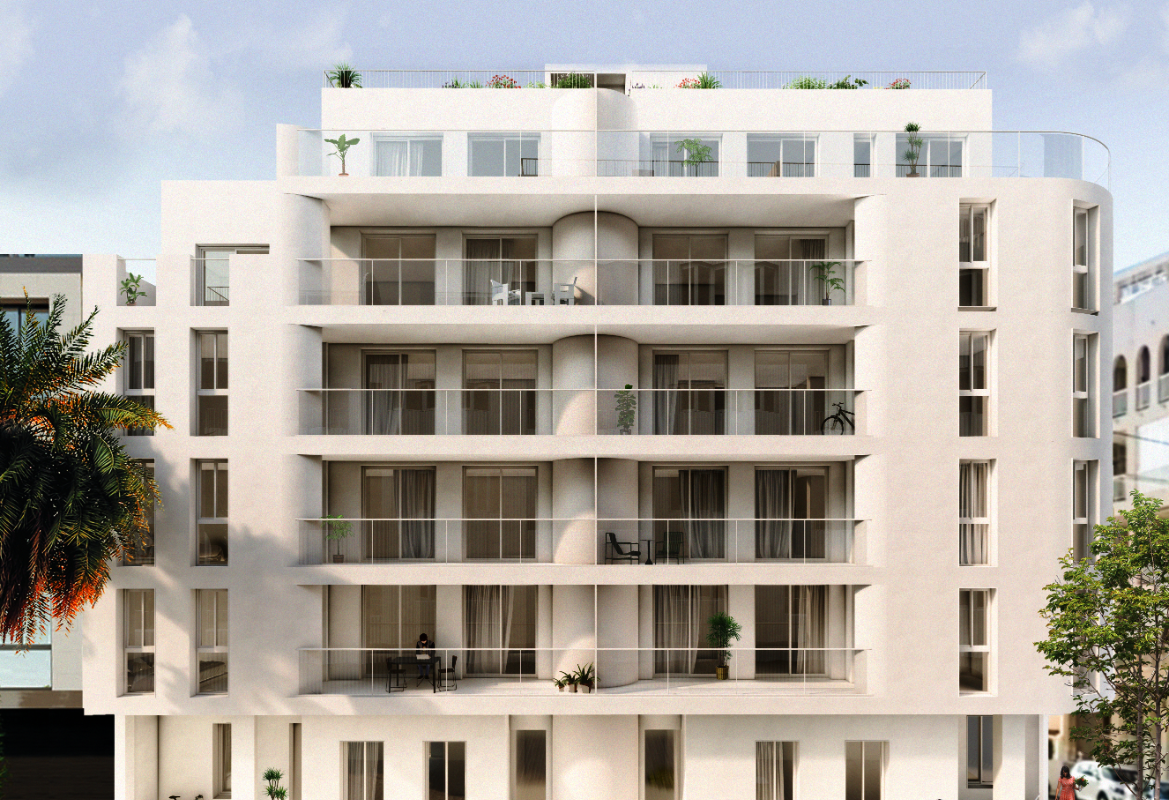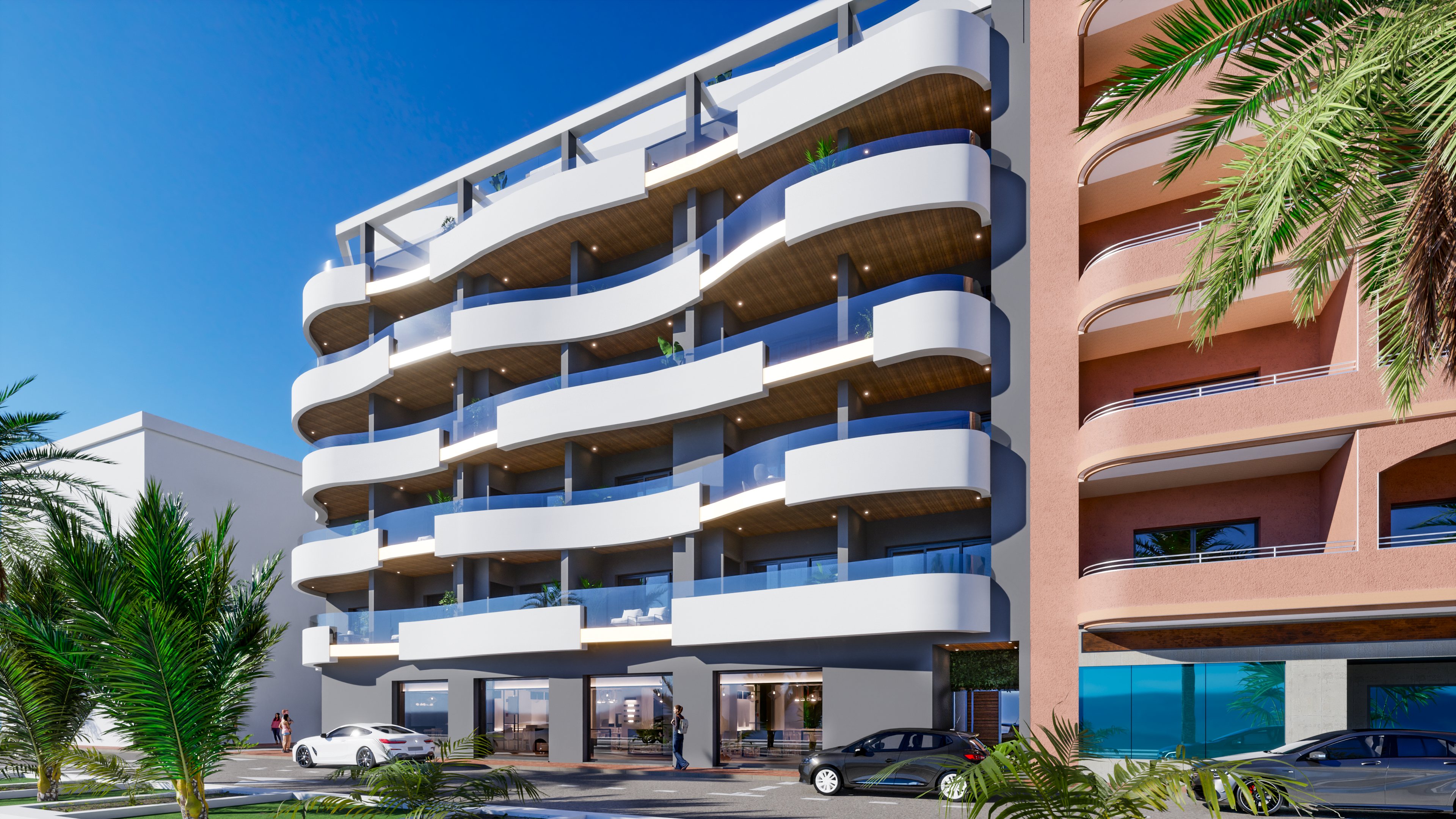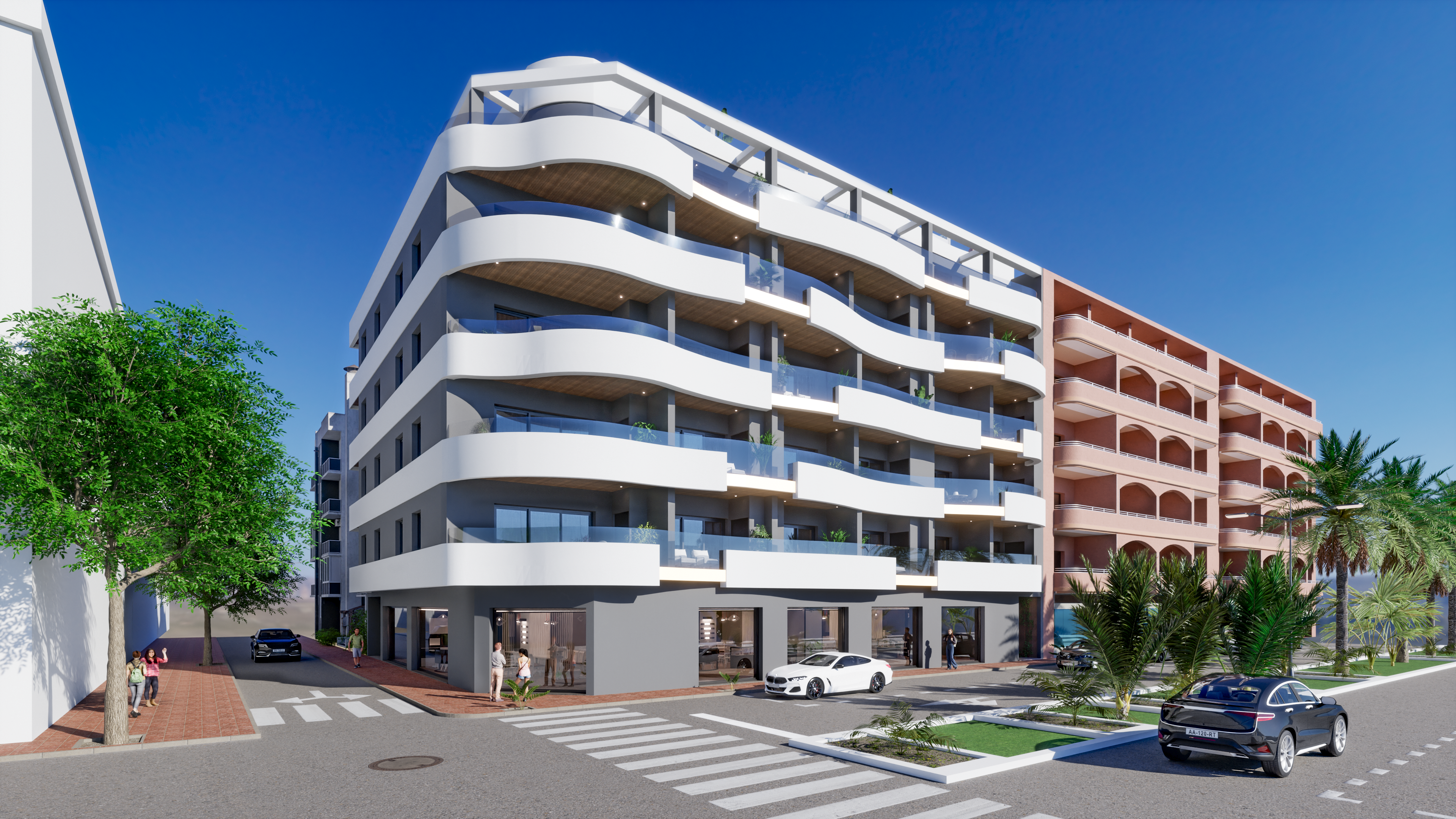STYLISH NEW 2-BED APARTMENTS ONLY 3 MINS FROM LA MATA BEACHES
STYLISH NEW 2-BED APARTMENTS ONLY 3 MINS FROM LA MATA BEACHES
Overview
- Apartment>Garden Apartment, Apartment>Penthouse
- 2
- 2
- 60.89
Description
Luxury new apartment block in the heart of Torrevieja’s stylish La Mata, with 2-bed and 3-bed homes sharing large communal pool.
Essentially, designated private parking is included at ground level.
THE LOCATION
![]() Cala del Mojón (nearest beach) – 3 min
Cala del Mojón (nearest beach) – 3 min![]() Playa Cabo Cervera (La Mata) – 4 min
Playa Cabo Cervera (La Mata) – 4 min![]() Plaza de la Constitution, Torrevieja – 10 min
Plaza de la Constitution, Torrevieja – 10 min![]() Torrevieja Marina – 11 min
Torrevieja Marina – 11 min![]() La Zenia Shopping Boulevard – 15 min
La Zenia Shopping Boulevard – 15 min ![]() La Marquesa Golf Resort – 20 min
La Marquesa Golf Resort – 20 min![]() La Finca Golf Resort – 26 min
La Finca Golf Resort – 26 min![]() Alicante Airport – 36 min
Alicante Airport – 36 min
THE APARTMENT
Hi-spec homes in a great location with sea views from the 2nd floor and higher, built by one of the world’smost renowned developers.
Ground floor units enjoy a terrace and a private garden, either 13m2 or 49m2 (for the corner plots)
![]() Seaward south-east-facing orientation, with most 2-bed homes having 61m2 of floorspace
Seaward south-east-facing orientation, with most 2-bed homes having 61m2 of floorspace![]() Ground floor corner units are 70m2 and the one remaining 3-bed model is 101m2
Ground floor corner units are 70m2 and the one remaining 3-bed model is 101m2![]() Fitted U-shaped kitchen featuring breakfast bar, white goods included
Fitted U-shaped kitchen featuring breakfast bar, white goods included![]() Charming sun terrace, accessed from both lounge & main bedroom
Charming sun terrace, accessed from both lounge & main bedroom![]() Laundry facility is conveniently tucked away in the corner of terrace
Laundry facility is conveniently tucked away in the corner of terrace![]() Motorised shutters with control switch to bedrooms & lounge
Motorised shutters with control switch to bedrooms & lounge![]() All bedrooms and fitted and lined wardrobes
All bedrooms and fitted and lined wardrobes![]() Main bedroom has en-suite included
Main bedroom has en-suite included![]() Air conditioning/heating unit with heat pump included, with remote control.
Air conditioning/heating unit with heat pump included, with remote control.![]() Designated private parking space on ground floor, along with large communal pool
Designated private parking space on ground floor, along with large communal pool![]() The last remaining 3-bed unit is on the top (5th) floor and has rooftop solarium with views
The last remaining 3-bed unit is on the top (5th) floor and has rooftop solarium with views
Delivery date is May 2025 – staged payments between contract & keys
Prices for the apartments vary according to bedrooms, floor level and layout – all options are details in the FLOORPLAN section below
Data listed in the summary is for Apartment #16 on the first floor.
THE AREA
This place is BURSTING with culture, history and fascinating facts – all of which is available elsewhere online. Here’s a brief history of one of Costa Blanca’s main cities.
The Torrevieja Salt Flats date back to before the 13th century and were an ancient royal possession. Until 1802 in Torrevieja there was only an old guard tower (which gives the place its place name) and some salt workers’ houses.
But in 1803, King Charles IV decreed the transfer of the administration of the Reales Salinas from La Mata to the location of the current center of Torrevieja, and the construction of houses was authorized. In 1829, the town was completely destroyed by an earthquake and later rebuilt.
The production and trade of salt determined and organized life here, converted into a city in 1931 by privilege granted by Alfonso XIII. Craft production was limited in the 19th century to the manufacture of linen, hemp and cotton for popular consumption. Although the anchorage made it difficult to load the salt, the port was completed until 1954.
In the mid-19th century, salt extraction was mainly carried out by Swedish and Dutch ships. The national market for this product was mainly Galician and, to a lesser extent, Valencian. The importance of the foreign market for this product has been maintained during the 20th century: a quarter of the salt produced is consumed in Spain and the rest is exported, its salt mines being the most important in Europe.
Modern-day Torrevieja has street festivals almost every month, hosts international sporting events and celebrates local cuisine with Tapas Trails every few months.
Address
Open on Google Maps- Address Rda. José Samper García
- City Torrevieja
- Zip/Postal Code 03183
- Area Alicante
Details
Updated on December 28, 2024 at 5:10 am- Property ID: RPJ-33316
- Price: from €245,000
- Bedrooms: 2
- Bathrooms: 2
- Property Type: Apartment>Garden Apartment, Apartment>Penthouse
- Property Status: For Sale
Energy Class
- Energetic class: A
- Global Energy Performance Index:
- A+
-
| Energy class AA
- B
- C
- D
- E
- F
- G
- H
Floor Plans
Mortgage Calculator
- Down Payment
- Loan Amount
- Monthly Mortgage Payment
- Property Tax
- Home Insurance
- PMI
- Monthly HOA Fees

